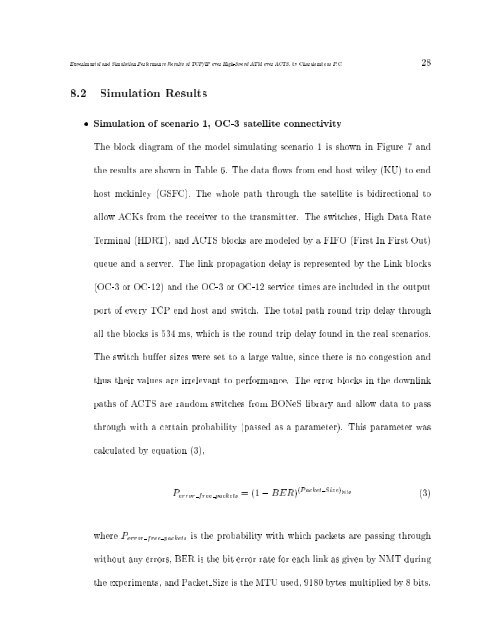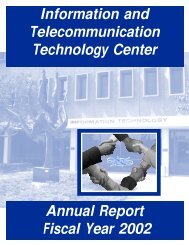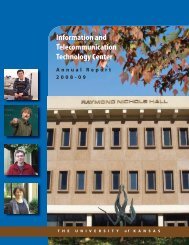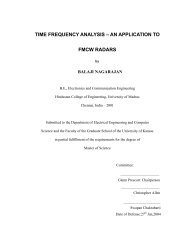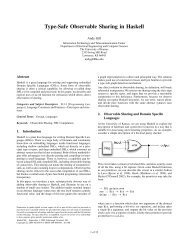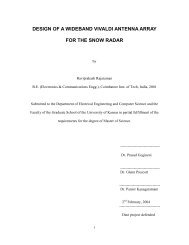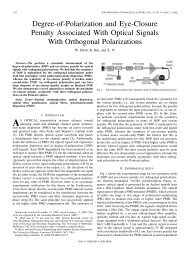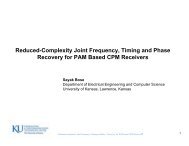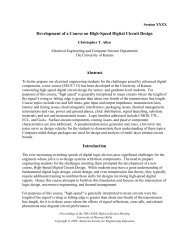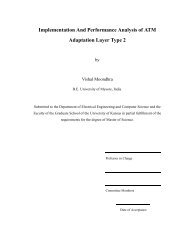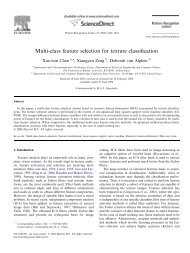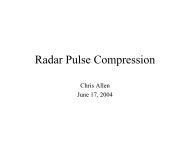Experiments and Simulations of TCP/IP Over ATM Over a High Data ...
Experiments and Simulations of TCP/IP Over ATM Over a High Data ...
Experiments and Simulations of TCP/IP Over ATM Over a High Data ...
Create successful ePaper yourself
Turn your PDF publications into a flip-book with our unique Google optimized e-Paper software.
Experimental <strong>and</strong> Simulation Performance Results <strong>of</strong> <strong>TCP</strong>/<strong>IP</strong> over <strong>High</strong>-Speed <strong>ATM</strong> over ACTS, by Charalambous P.C. 28<br />
8.2 Simulation Results<br />
Simulation <strong>of</strong> scenario 1, OC-3 satellite connectivity<br />
The block diagram <strong>of</strong> the model simulating scenario 1 is shown in Figure 7 <strong>and</strong><br />
the results are shown in Table 6. The data ows from end host wiley (KU) to end<br />
host mckinley (GSFC). The whole path through the satellite is bidirectional to<br />
allow ACKs from the receiver to the transmitter. The switches, <strong>High</strong> <strong>Data</strong> Rate<br />
Terminal (HDRT), <strong>and</strong> ACTS blocks are modeled by a FIFO (First In First Out)<br />
queue <strong>and</strong> a server. The link propagation delay is represented by the Link blocks<br />
(OC-3 or OC-12) <strong>and</strong> the OC-3 or OC-12 service times are included in the output<br />
port <strong>of</strong> every <strong>TCP</strong> end host <strong>and</strong> switch. The total path round trip delay through<br />
all the blocks is 534 ms, which is the round trip delay found in the real scenarios.<br />
The switch buffer sizes were set to a large value, since there is no congestion <strong>and</strong><br />
thus their values are irrelevant to performance. The error blocks in the downlink<br />
paths <strong>of</strong> ACTS are r<strong>and</strong>om switches from BONeS library <strong>and</strong> allow data to pass<br />
through with a certain probability (passed as a parameter). This parameter was<br />
calculated by equation (3),<br />
P error free packets =(1,BER) (P acket Size) bits<br />
(3)<br />
where P error free packets is the probability with which packets are passing through<br />
without any errors, BER is the bit error rate for each link as given by NMT during<br />
the experiments, <strong>and</strong> Packet Size is the MTU used, 9180 bytes multiplied by 8 bits.


